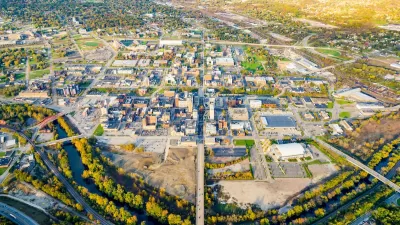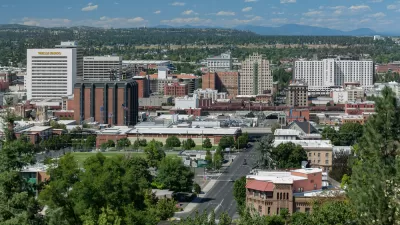Habitat for Humanity is working with 3D-printers to reduce the costs of construction and provide more housing for families in need.

Habitat for Humanity is enlisting the help of 3D-printing companies to fight the growing housing crisis and build more homes faster and more affordably. As Claretta Bellamy reports, high costs and material shortages have led developers, including Habitat for Humanity, to look for innovative solutions for producing low-cost housing to meet growing demand.
According to the article, a 3D-printed home built from concrete can save up to 15 percent on construction costs while still providing a "safe, affordable place to live" and the opportunity to own a home for low-income families.
"Using 3D printing to build homes provides numerous benefits, including a decrease in construction time due to the machine’s efficiency," Bellamy writes. According to Kirk Andersen of 3D-printing company SQ4D, the minimal need for on-site supervision also prevents injuries and saves builders money. And while traditional homebuilding takes six to 12 months, a 3D-printed home takes under six months to erect.
Housing advocates like Jeff Olivet, co-founder of Racial Equity Partners, say that in addition to programs like Habitat for Humanity, fighting decades of exclusionary housing policies and fixing the deeply entrenched affordability crisis will require "a national collective effort that also involves fixing housing policies and expanding services."
FULL STORY: How 3D printing can be the solution to the nation’s affordable housing crisis

Alabama: Trump Terminates Settlements for Black Communities Harmed By Raw Sewage
Trump deemed the landmark civil rights agreement “illegal DEI and environmental justice policy.”

Planetizen Federal Action Tracker
A weekly monitor of how Trump’s orders and actions are impacting planners and planning in America.

The 120 Year Old Tiny Home Villages That Sheltered San Francisco’s Earthquake Refugees
More than a century ago, San Francisco mobilized to house thousands of residents displaced by the 1906 earthquake. Could their strategy offer a model for the present?

In Both Crashes and Crime, Public Transportation is Far Safer than Driving
Contrary to popular assumptions, public transportation has far lower crash and crime rates than automobile travel. For safer communities, improve and encourage transit travel.

Report: Zoning Reforms Should Complement Nashville’s Ambitious Transit Plan
Without reform, restrictive zoning codes will limit the impact of the city’s planned transit expansion and could exclude some of the residents who depend on transit the most.

Judge Orders Release of Frozen IRA, IIJA Funding
The decision is a victory for environmental groups who charged that freezing funds for critical infrastructure and disaster response programs caused “real and irreparable harm” to communities.
Urban Design for Planners 1: Software Tools
This six-course series explores essential urban design concepts using open source software and equips planners with the tools they need to participate fully in the urban design process.
Planning for Universal Design
Learn the tools for implementing Universal Design in planning regulations.
Clanton & Associates, Inc.
Jessamine County Fiscal Court
Institute for Housing and Urban Development Studies (IHS)
City of Grandview
Harvard GSD Executive Education
Toledo-Lucas County Plan Commissions
Salt Lake City
NYU Wagner Graduate School of Public Service




























